Rugs Woven by Women’s Hands: Oriental Carpet
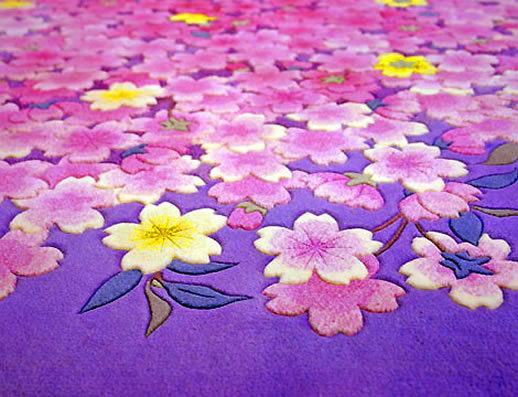
The rug in the papal audience room at the Vatican, a 300 tatami-sized rug in the Imperial Palace, rooms for receiving guests in countless historical buildings across Japan; all laid with rugs made in one place. In a small town in Yamagata Prefecture called Yamanobe, known for its weaving and textiles, there is a rug manufacturer called Oriental Carpet. With just thirty artisans on staff, this tiny company makes handmade rugs of the highest caliber.
Interview by Takafumi Suzuki . Translation by Claire Tanaka
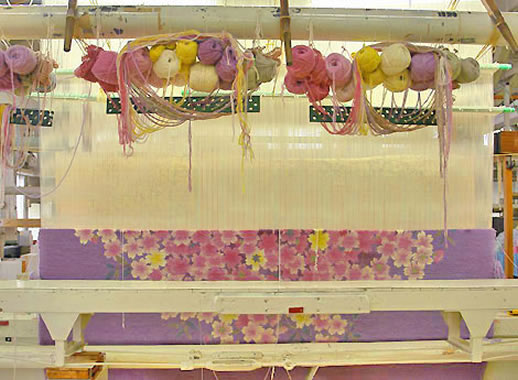
Q: Ken Okuyama, who has designed for Ferrari, teaming up with an old established carpet manufacturer. I find that juxtaposition very fresh.
A: It started when Mr. Okuyama came to view the workshop. It was right around the time when Yamagata Kobo was founded and before the Japan Brand project and the Yamagata Carrozzeria Project had come along. Like you said, we did find Mr. Okuyama’s design to be very new to our eyes, and at first a lot of the staff had the reaction of, “What the hell is this?!” (laughs)
Q: The thing that makes Oriental Carpet different from other rug manufacturers is the fact that you do everything by hand, isn’t that right?
A: Yes. It takes a very high level of technical skill and know-how to do the hand-weaving and hand-sewing that makes up our rug manufacturing methods. Only the most skilled artisans can do that, and even then they progress just seven centimeters per day, so on top of having good dexterity, they’ve also got to be patient. A mat for an home’s entryway takes a month, a rug for a six tatami room takes three months to complete. That’s why there’s only one company in all Japan that manufacturers large rugs by hand.
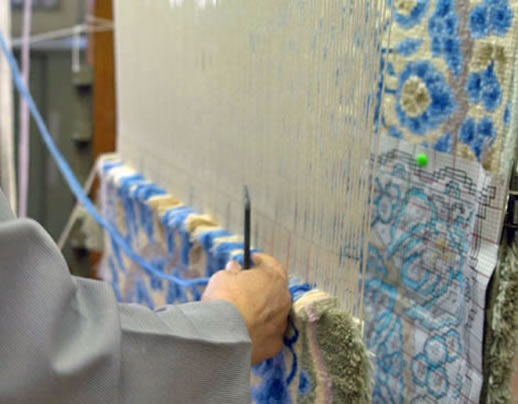
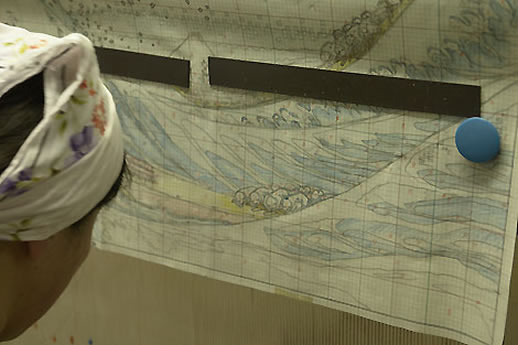
Q: I can feel how fine the work is when I touch the rug. That must be thanks to your insisting that everything is done by hand.
A: But in our case, we have one more special technique that we use. It’s a technique called mercerizing (a chemical wash to add luster). Other companies can’t copy our technique even if they try. The technique we use to produce a unique luster and texture was developed over long years and it’s our technique alone.
Q: Is it a technique you invented?
A: No, we didn’t. Actually, it’s originally a Chinese technique. All the other rug-making techniques are all from China as well. Our founder, in about 1935, brought seven rug experts over and learned their skills over the course of two years. In those days, relations between China and Japan were far from rosy. But the founder thought, “I want to somehow revive the textile and weaving traditions of Yamanobe.”
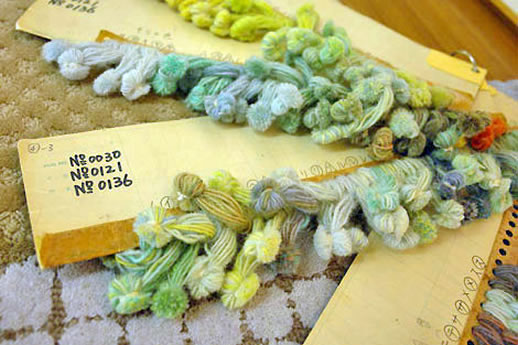
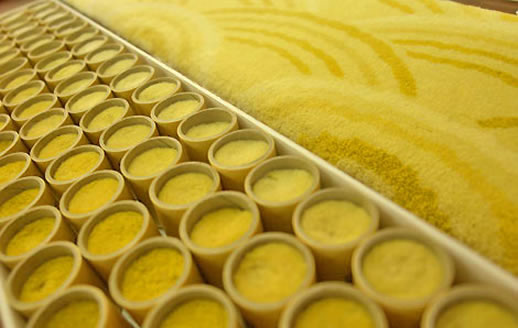
Q: I see. That’s wonderful, the attitude of looking overseas to learn new techniques.
A: In those days, times were hard and girls often had to sell their bodies on the street to get by. Apparently the founder started the business because he wanted to give women a place to work.
Q: So, do you still employ female artisans?
A: Yes. If you go to the factory, it’s all women. Women are particularly suited to the fine, delicate work that weaving requires. But the founder really focused on the work environment. People hear “factory with all women working in it” and they think of things like the movie “Ah! Nomugi Toge.” Bad conditions and long hours, stuff like that. But the founder made our factory with lots of space and light so the employees could do their work in comfort. I think the founder was more concerned with supporting the community than he was with making a profit.
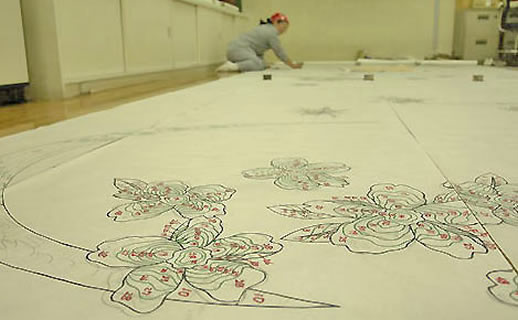
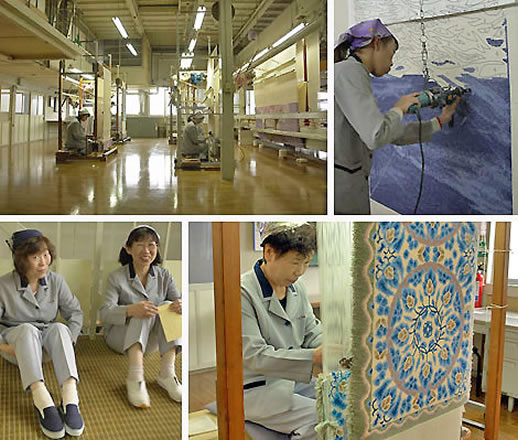
Q: Even now I get a strong sense of the company’s community involvement.
A: Yes. Actually, I went to university in Tokyo and I first got a job in the media, so I entered the company in a roundabout fashion. When I was young, I felt “Tokyo is better than Yamagata” but gradually my homing instinct began to kick in, and I came back to Yamagata. That’s why I feel I’ve got a stronger attachment to the land here than most people. I’d say in that way I have a similar dedication to community development as the founder did. I can really feel where he was coming from.
Q: Are you related to the founder by blood?
A: No, actually the founder was my wife’s great-grandfather. That’s why I never even guessed that I would enter this company when I was a child. (laughs) I’d always been interested in the media, and that was why I went into that line of work after I graduated from university. And now I’m the fifth generation in a rug manufacturer. You never know what you’ll wind up with in life.
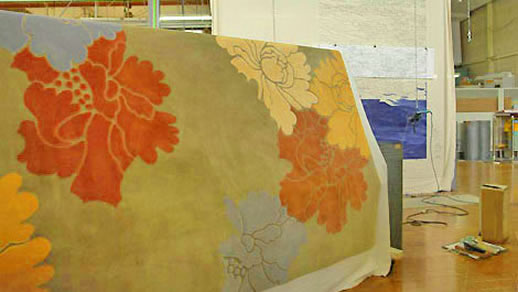
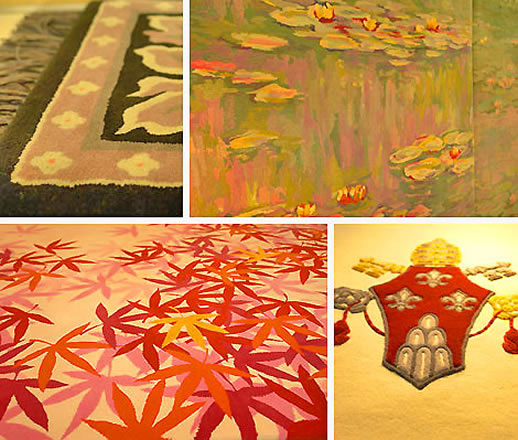
Q: But, because of that experience I imagine you’re able to look at things in a calm and objective way, are you not?
A: Yes, that could be true. I think about what to do to preserve this craft. Opening the factory to tours so that not just interior design people but the general public can also learn more about what we do, doing collaborative works with designers, putting more effort into the textile art angle, I’m trying lots of new things. I think of it as my calling to leave this place in a better condition than I found it.
Q: That’s the background behind why you’ve got a Ferrari designer working with you.
A: But, actually that project was really tough to get off the ground. (laughs) At first, everyone was all, “what the hell!” but it was really hard to produce what Mr. Okuyama called for, and at first the artisans who were working on it were thinking “Where are we going to put this fantastic pattern?” And I started to get nervous. But it was a funny thing, once it was done and we’d let it sit for a little while, the artisans started to say “It’s a wonderful balance of color and form.” When highly skilled artisans and designers get together, they can make wonderful things. That’s why I want to keep going, learning from my mistakes along the way, so I can keep these techniques for the next generation, doing manufacturing with a good spicy kick to it.
Oriental Carpet Mills, Ltd. Yamanobe-cho 21, Higashimurayama-gun, Yamagata
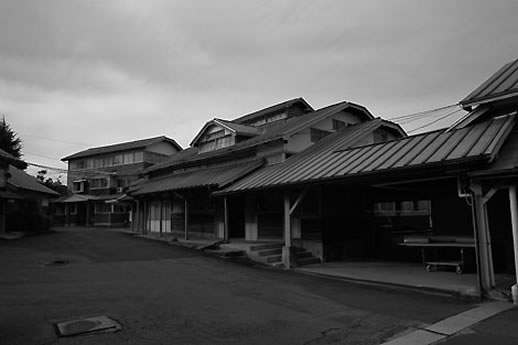
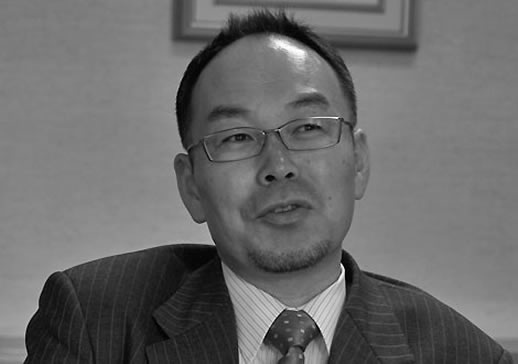
A Word from a Regional Project Participant


Originally, we had established something called the Carrozzeria Project in 2003 which was a collaboration between Ken Okuyama and local Yamagata companies, and from there we got involved in the Japan Brand project. We at the chamber of commerce have always maintained a position of “not getting in the way.” Mr. Okuyama acted as a conceptual leader and took command. We tried to stay in the sidelines, out of the way, giving our support in an unobtrusive way. Through this project, we have had very little of what you could call hardship, and in fact we have learned a lot. It has been really impressive to see the local craftspeople giving their utmost in response to Mr. Okuyama’s demands. Thanks to that, I think the craftspeople at the participating companies have reached a new level in their respective fields. As a result of everyone’s efforts, we participated in the France’s international interiors trade fair, the Maison et Objet (2006 to 2008) and Italy’s Milano Salone Internazionale del Mobile (April 2008). In addition, Yamagata Kobo was founded in February 2007 to give sales support, and the Carrozzeria Foundation was established as a business model in September of 2007. But the best proof of our success has been the eighty-plus product variations that have been produced thanks to the venture, and the numerous hit products that have emerged. We plan to continue using Yamagata’s superior local resources and talented craftspeople, from product development to production and sales; world-class products united under the Yamagata name.
Japan Brand
Japan Brand



